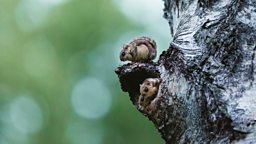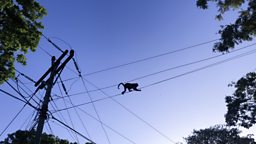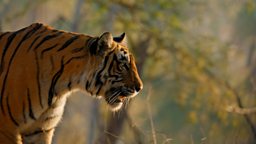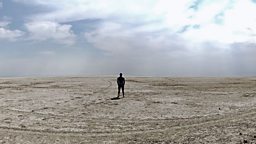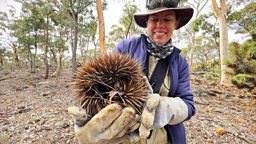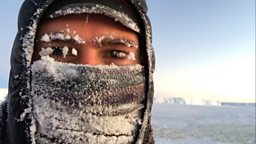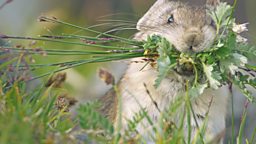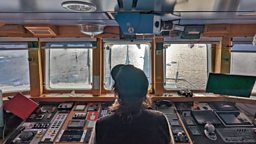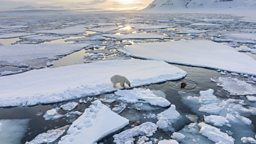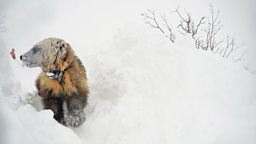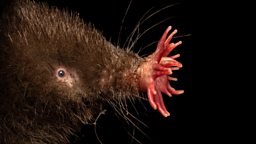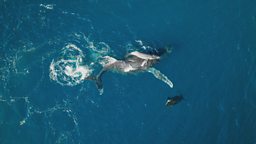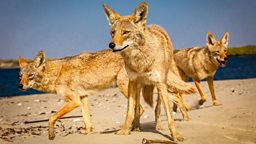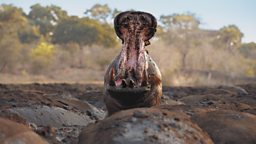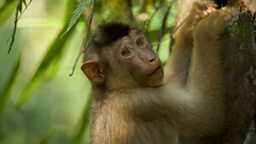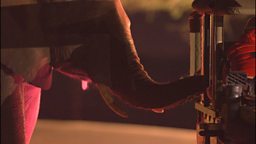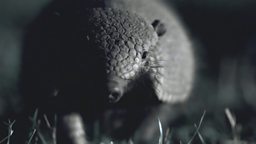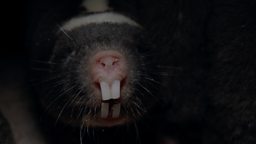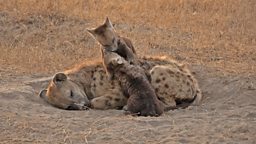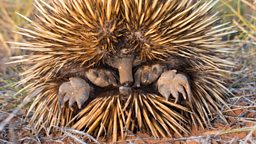Filming flying squirrels in super slow-motion
By Mammals FIeld Director, Madalena Boto
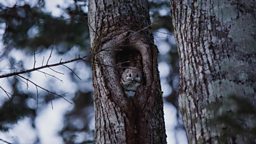
I worked as a field director for the Forest episode, joining scientists, cinematographers and an ingenious rigging expert to get unprecedented access to mammals living in forests across the world. From chimpanzees in Gabon to the greatest mass gathering of fruit bats in Zambia, it was key that the sequences we filmed took us into the heart of these animals.
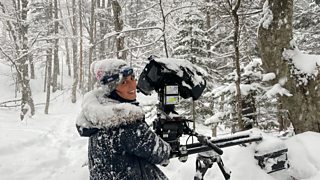
The most challenging task for me was the final one - filming the Siberian flying squirrel in the forests of Japan.
The shoot was split into two parts; one at the peak of winter to capture their magical gliding in slow-motion and the other in spring to film the intimate bond between mother and kits. I worked with cameraman Domenico Pontillo, an expert in using the high-speed Phantom camera, and fixer Mai Nishiyama.
In January on the island of Hokkaido the land is covered in snow and the hours of daylight are short, with temperatures often dropping to -20°C. Some mornings the air was so cold it made even the trees look frozen. It seemed time stood still - the perfect setting to catch our slow-motion action.
The challenges became clear at the first nest we tried. Flying squirrels are mainly nocturnal, leaving the nest just after sunset and returning right before sunrise, meaning we only had a tight window of light to film them. Deploying four different cameras, Domenico made the most of every chance he got and gathered plenty of shots of these very cute animals. But most of the gliding was happening high in the canopy above us. Inaccessible and impossible to film.
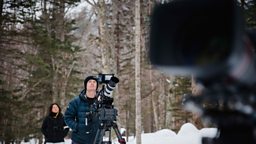
Our break came when Mai got a tip from a guide at another park about a nest with lots of activity that was also lower down. We decided to go for it, packed everything up and crossed the island.
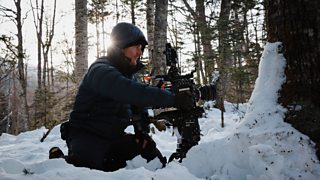
At this new nest hole there were about six squirrels coming back every morning to sleep. The tree was tall and a fair distance from surrounding trees, meaning there was a good chance the squirrels would glide from it when they woke up in the evening and headed out to forage.
But while the conditions were perfect, using a high-speed camera can be challenging as the motion you are filming needs to be predictable. Only by knowing the likely trajectory of a subject and its speed can you place the camera in the right place and choose the right distance to focus.
This meant we spent days looking closely for patterns and analysing everything the squirrels did, examining Domenico’s footage over and over. Of course, the slightest change in weather could mean a very different routine for the squirrels, and the action always happened very quickly. In the mornings, over the course of 20 minutes, the squirrels arrived from every direction and most of them immediately went inside the nest. In the evenings they moved even faster. Within a few minutes all six would be out of the nest, eager to head out into the nighttime forest.

We finally started getting the shots we had dreamed of with just a few days of filming left. As the squirrels disappeared in the dark forest, we watched back the evening shots and were ecstatic. It was incredible to be able to see in such detail a land mammal spreading not its wings but its membranes and – for a moment – experiencing the sensation of flying.
It was incredible to be able to see in such detail a land mammal spreading not its wings but its membranes
I remember watching a TV commercial once that asked the viewer to reflect how long a minute is, making the point that time is what we each make of it. By using a camera that can slow down action by up to 40 times, we saw just how much these squirrels make the most of their time in the air.
As forests around the world get cut down at unprecedented rates, there is not much time left to preserve these habitats and the animals that depend on them. Working on this series left me with a renewed sense that we all need to start making the most of that time.

Siberian squirrels: Learning to fly
Siberian squirrels learn to glide from tree to tree

